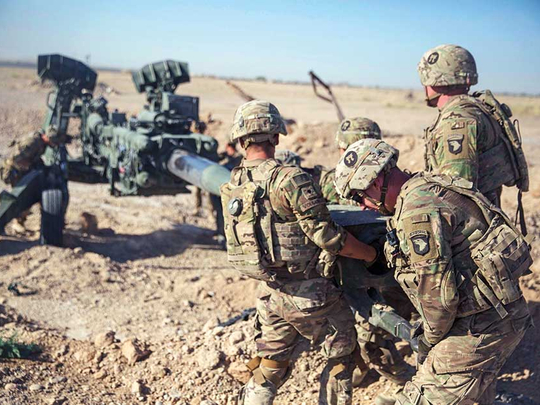
Kabul: President Donald Trump’s new Afghanistan strategy — more troops, pressure on Pakistan and diplomatic outreach to the Taliban — relies on tactics his predecessors tried without success to get out of America’s longest-running war.
There’s little reason to think Trump’s approach will produce better results.
But with Afghanistan’s government losing control of wide swaths of the country and Daesh and Taliban forces on the move, Trump and his top advisers are betting the formula will work this time. And they are vowing not to set any deadlines, criticising President Barack Obama’s public timetables for withdrawal.
“American strategy in Afghanistan and South Asia will change dramatically,” Trump said in a nationally televised speech Monday night from Fort Myer, Virginia. “A core pillar of our new strategy is a shift from a time-based approach to one based on conditions.”
Elected in part on his vow to wind down America’s foreign wars, Obama signalled his intention to withdraw troops even as he was boosting forces. That led the Taliban to believe it could simply outlast the US
Obama’s timelines “sent a very negative message to both friends and enemies in Afghanistan,” said Ahmad Majidyar, a fellow at the Middle East Institute, ahead of Trump’s speech. “They were saying we cannot side with the US government or the military. It also encouraged the Taliban to just wait out the US forces instead of coming to the negotiating table.”
Trump is now the third US president to struggle with how to get out of Afghanistan, a country beset by ethnic, religious, cultural and tribal factions that have stymied foreign armies for centuries. The mixture is amplified by the involvement of powers including the US as well as neighbouring Pakistan and Russia.
Since President George W. Bush first sent special forces to Afghanistan to help oust the Taliban government and track down Al Qaida terrorists after the Sept. 11, 2001 attacks, the war has cost the US more than $714 billion (Dh2.62 trillion) and several thousand lives.
Saying that “micromanagement from Washington, D.C. does not win battles,” Trump said he’s already given Defence Secretary James Mattis the authority to raise troops levels and “target the terrorist and criminal networks that sow violence and chaos throughout Afghanistan.”
Troop increase
US troop levels may have the smallest impact on determining Afghanistan’s future. Even with about 100,000 US soldiers in the country in 2011, and tens of thousand of additional Nato troops, the Taliban managed to survive and plot their comeback. In his final year, Obama put off a plan to reduce the US presence to 5,500 troops, leaving about 8,400 in the country.
Now, under Trump, that number is expected to climb by about 50 per cent. Rather than trying to retake territory, their focus would be on training Afghan special forces troops, a strategy pursued with some success in the past. The key difference under Trump would be an added emphasis on training for the broader Afghan army.
“We did 3 1/2 years of intensive training and we pulled people out in the middle of battles and started going home, and that left the Afghans unable to finish the job,” said Ronald Neumann, the US ambassador to Afghanistan in 2005-2007.
Afghanistan analysts say that may still not be enough.
“I really don’t think the deployment of 3,000 or 5,000 troops can overcome security challenges,” said Abdul Qader Zazai, first secretary and a lawmaker in the Afghan parliament.
Terrorist ‘safe haven’
For Trump, the troop increase and giving greater discretion to commanders on the ground is just part of a plan that includes providing continued support — but no “blank cheque” — for Afghan President Ashraf Ghani and pressuring Pakistan. In his remarks, the US president singled out Pakistan for often giving “safe haven to agents of chaos, violence and terror.”












